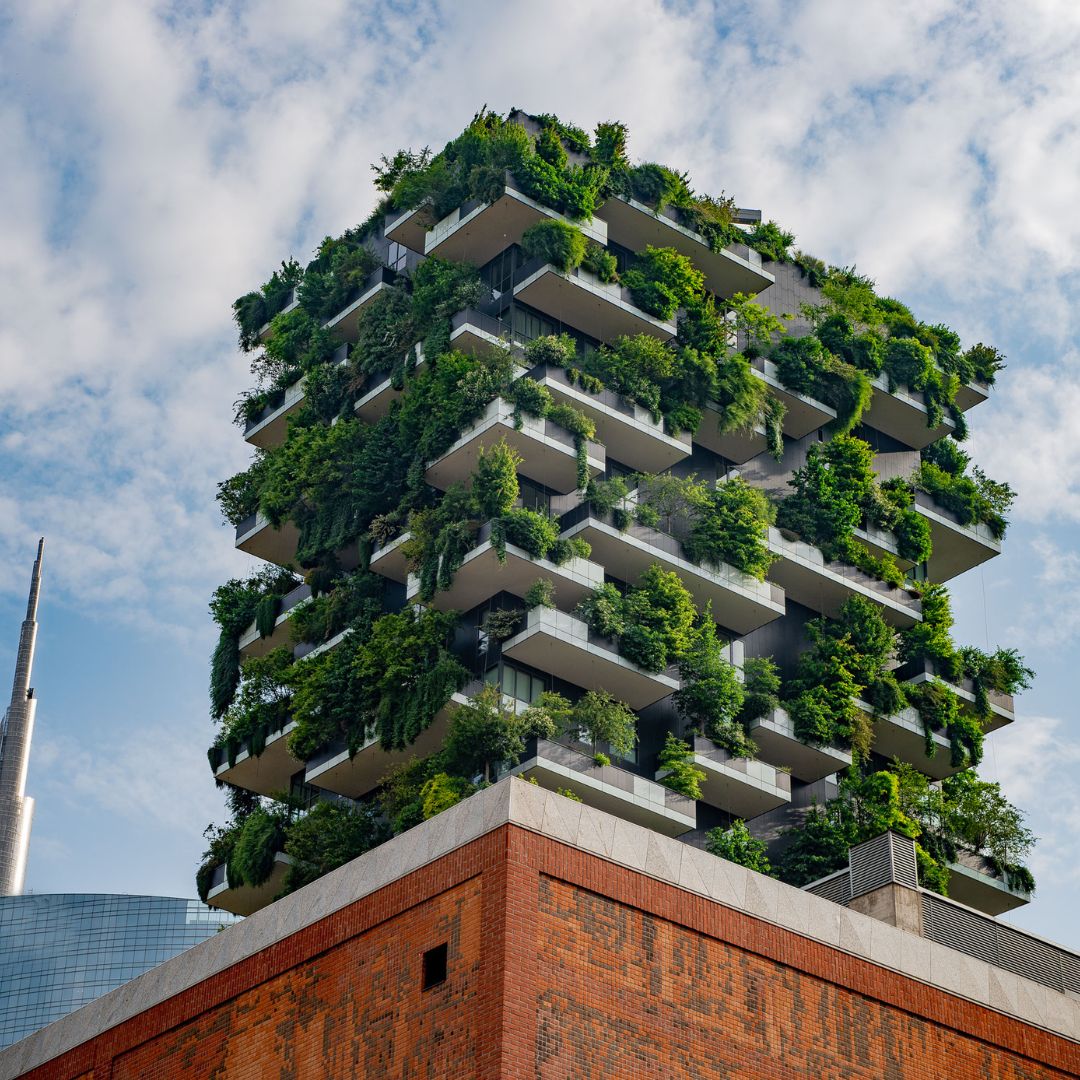The Rise of Vertical Forests: Merging Architecture with Ecology

Vertical woods have become a lighthouse of sustainable urban life as cities climb vertically to house rising populations. This creative method of urban forest architecture combines modern design with ecological protection by incorporating vegetation into skyscrapers.
What is a Vertical Forest?
Designed to provide a self-sustaining ecosystem in urban settings, a vertical forest is a construction covered in trees, bushes, and plants. These structures improve the visual attractiveness of cityscapes as well as offer environmental advantages like temperature control, noise reduction, and air cleaning.
Benefits of Vertical Forests
Improved Air Quality: In congested cities, vegetation atop vertical forests releases oxygen while absorbing CO2 and contaminants, therefore improving the air quality.
Energy Efficiency: Greenery's natural shade and cooling properties help to lower the air conditioning energy demand, therefore encouraging sustainable living.
Biodiversity Restoration: Supporting birds, insects, and other animals in metropolitan environments, these buildings function as little ecosystems.
Global Examples of Vertical Forests
Comprising more than 900 trees and 20,000 plants spanning two towers, Bosco Verticale in Milan, Italy, is one of the most well-known vertical forests. Two more noteworthy projects are Sydney's One Central Park and China's Nanjing Green Towers. These architectural wonders create a motivating model for urban forest design all around.
Vertical Forests in Melbourne
Renowned for its environmental consciousness, Melbourne has adopted similar ideas in how urban landscape development is done. City projects concentrate on blending high-rise living with green areas to provide better surroundings for the ecology and the people.
The Future of Vertical Forest Architecture
Vertical trees are a good way for cities trying to counteract urban heat and climate change. These concepts are opening the path for more environmentally friendly urban life by combining architecture with ecology.
Discover how urban landscape initiatives in Melbourne are transforming the city skyline to investigate further about sustainable urban designs and their influence.
Challenges in Vertical Forest Architecture
Though the idea of vertical trees is novel and exciting, there are several difficulties with it. Maintaining the vegetation is one of the biggest challenges, especially for tall buildings. Ensuring the plants get enough water, sunshine, and care may be expensive and difficult. Moreover, the structural integrity of structures has to be carefully planned to handle the extra weight of irrigation systems, soil, and plants.
Still, sustainability is quite important. Some detractors contend that trees planted in cities would not be sufficient to offset the more general ecological issues related to urban development. Maximising the advantages of these woods depends on their being integrated with other sustainable urban design strategies.
A Global Shift Towards Eco-Friendly Architecture
Rising vertical trees fit a greater worldwide trend towards more environmentally sustainable building design. Using recyclable materials, developing green roofs, and establishing eco-districts—among other sustainable building techniques—cities all over are progressively implementing These initiatives taken together help to produce more ecologically conscientious, resilient, and liveable metropolitan areas. More ambitious and creative ideas will probably surface as more cities adopt urban forest design, therefore sustaining the global transformation of green cities.
Note: IndiBlogHub features both user-submitted and editorial content. We do not verify third-party contributions. Read our Disclaimer and Privacy Policyfor details.







